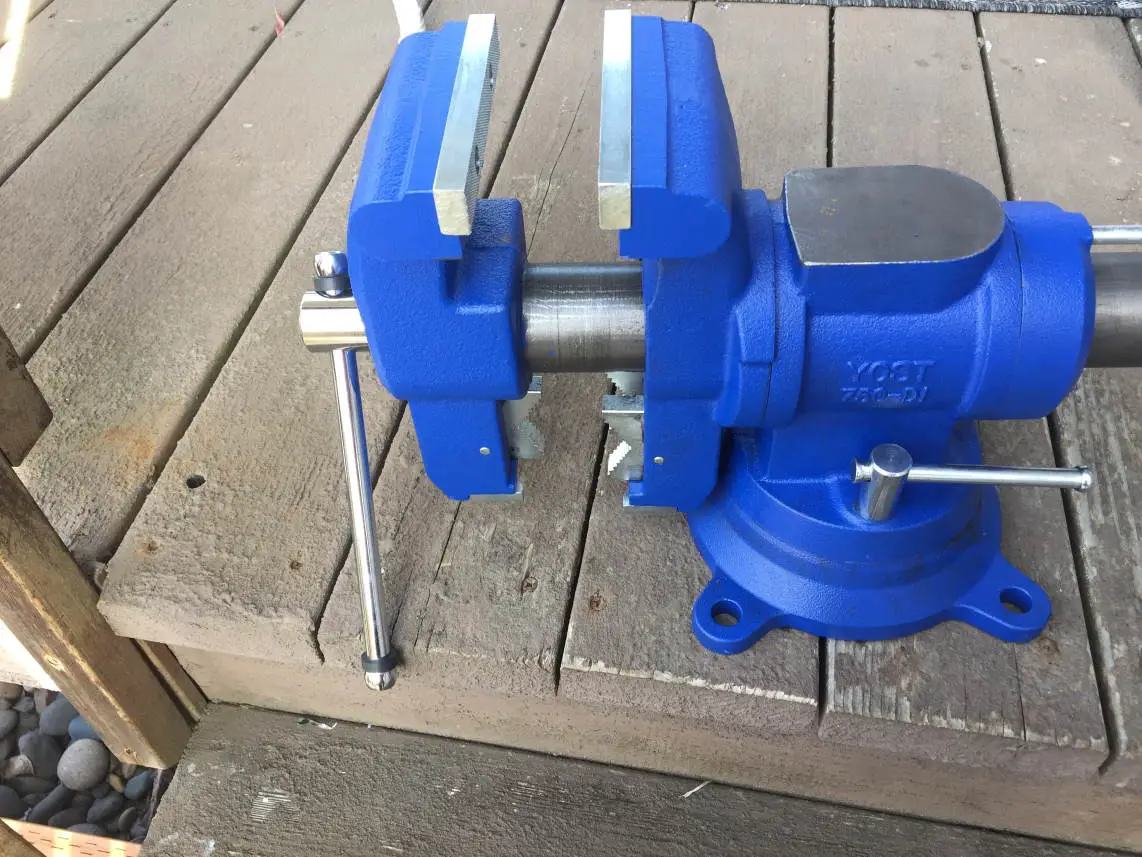
It’s pretty easy to use a multi-purpose vise (sometimes spelled vice). I will walk you through how to use one in the paragraphs below:
Mounting your vise
The first step is to mount your vise to a table or workstations. It’s considered best practice to bolt your vise to the corner of your table. Mounting it in the middle of your table can be done, but it does cause a number of problems such as:
- Not being able to work ergonomically as the table is in the way
- Not being able to fit your work piece into the vise as it will bump into the table
- Vises that have rotating heads (which are quite tall) may bump into the table if there is not enough room
That being said, don’t make this a bigger deal than it is. I know of several people that have 3+ vises and they will often have one on each corner, and one in the middle. The middle one works just fine.
Most right handers will mount their vise on the left hand corner, with left handed people mounting their vise on the right hand corner. I must confess I don’t know why this is. I once heard it’s a tradition from woodworking as it’s easier to plane boards by moving the planer towards the vise. Most vise instruction manuals will recommend this configuration as well.
Again, just do what makes most sense for your shop and setup.
Open Vise Jaws
This part is easy. To open your vise jaws, rotate the handle counter clockwise to open the jaws. Open the jaws until they are wide enough to hold your work piece.
Place Vise Jaw Pads (If Needed)
If you are working with softer materials like wood, brass, or aluminum, it may be worthwhile to place a vise jaw pad on your vise to prevent the vise from scratching or marring your work. As a simple rule: hard scratches soft. A vise jaw cover made of softer materials can help protect your work.
Clamp Your Vise Jaws
To close your jaws around your workpiece, turn the vise handle clockwise. Make sure your vise is clamping down firmly enough to prevent the work-piece from wiggling around, but don’t overdo it. Clamping with excessive pressure will scratch your work piece and will increase the wear and tear on your vise.
If the piece you are clamping is long or unwieldy, make sure to support it with an adjustable stand or table at the far end of the piece. This takes strain of your vise making it last longer, and provides additional support to whatever you are clamping.
Rotating the vise head on multi jaw vises
Many multi-purpose vises will have two different jaw heads on the vise. To rotate the vise in order to access the other head is straight forward. Pull the pin that locks the head in place (the exact location of this can vary by vise), and then push your vise until it begins to rotate.
And that’s it! Make sure to enjoy your new piece of equipment. If you don’t have a vise yet, and are just doing research, make sure to check out my guide.